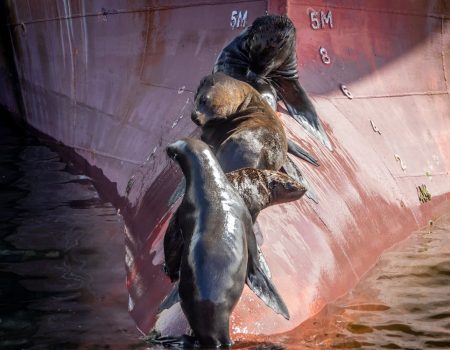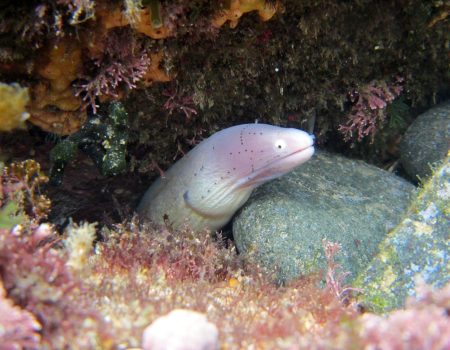Axolotls are salamanders that live entirely underwater. These lovely creatures hatch as eggs and reach maturity at around one year of age. In their native habitat near Mexico City, they are nearly extinct, and their numbers are still dwindling. They are, however, more popular than ever as exotic pets, with many more in captivity than in the wild.
You’re not alone if you’ve ever looked at the word axolotl and wondered what it means or how to say it. This amphibian, pronounced ax-uh-lot-ul, resembles a strange cross between a salamander and a fish. They appear to be unsure of what they are, despite having legs, gills, and a slithery body. Unfortunately, they are far fewer in number than they once were in the wild. So, how many axolotls are there in the world?
You’re not alone if you’ve ever looked at the word axolotl and wondered what it means or how to say it. This amphibian, pronounced ax-uh-lot-ul, resembles a strange cross between a salamander and a fish. They appear to be unsure of what they are, despite having legs, gills, and a slithery body.
In this article, we’ll discuss what axolotl is, its lifespan, its stages, and how many are still left in this world.
What is an Axolotl?
Axolotl is a salamander with a very distinct genetic makeup. They retain most of their larval features into adulthood due to a rare condition known as ‘neoteny,’ so they have all the characteristics of a tadpole – from feathery gills to a long, quill-like dorsal fin – even when fully mature.
Axolotls are carnivores that feed on worms, insects, crustaceans, mollusks, and some small fish. They were at the top of the food chain within their distribution habitat until recently, but invasive species of perch and tilapia pose a threat and have contributed to their decline in numbers.
Axolotls, which are frequently misidentified as fish, are unique among amphibians in that they spend their entire lives in water. Because of their appearance and preferred habitat, axolotls are also known as Mexican walking fish.
The axolotl’s native habitat, primarily located in the canals and remnants of Lake Xochimilco near Mexico City, has been severely impacted by urbanization and pollution. As a result, their populations are not only decreasing but also facing threats from invasive species and habitat degradation.
Where Can I Find Axolotls?
Axolotls have only one remaining natural habitat: Lake Xochimilco in Mexico’s Valley of Mexico. The nearby Lake Chalco was once a home for these creatures, but it was drained by the government due to flooding concerns. This compelled its wildlife to seek new habitats.
What Do Axolotls Eat?
Worms, insects, small fish, and almost anything else that can fit inside their mouth and swallow whole, including other salamanders, are eaten by axolotls.
Axolotls are fed brine shrimp, California blackworms (Lumbriculus varigatus), and salmon pellets in the lab. Crickets, worms, and beef liver are fed to terrestrial salamanders. Aquatic salamanders are fed food pellets in the Ambystoma Colony.
The axolotl has a diet similar to other salamanders. They feed upon a large variety of different underwater prey, including:
- Worms
- Insects
- Tadpoles
- Fish
- Snails
- Crustaceans
- Larvae
- Brine Shrimp
How do Axolotls Differ from Other Salamander Species?
It’s difficult to believe that axolotls belong to the same amphibian family as salamanders. Appearance, anatomy, and habitat distinguish them from newts, olms, and fire salamanders, and it’s easy to see why they’re colloquially known as ‘walking fish.’
Let’s take a look at what distinguishes axolotls from other salamander species:
- Axolotls are larger than many other salamander species, growing significantly larger than land animals.
- The axolotl is only found in Lake Xochimilco in the Valley of Mexico, as well as in Mexico City’s canals and waterways.
- They live in a high-altitude body of water because they are neotenic. This is unique to axolotls, as other salamanders have a much wider range.
- Axolotls, unlike most other salamander species, spend their entire lives in water. After reaching full maturity, some animals have been known to venture onto land, but the majority of their lives are spent beneath the surface, breathing through gills.
How Many Axolotls Are in the World 2024?
According to the International Union for Conservation of Nature, there are between 50 and 1,000 axolotls left in the wild in 2024. Because axolotls are extremely afraid of humans, the exact number cannot be determined. Even seasoned conservationists have difficulty locating them in the wild.
However, the total number of axolotls in captivity is much higher, possibly reaching 1 million according to some estimates. They are popular exotic pets in many parts of the world, as well as excellent laboratory subjects. In some places, they are even considered a delicacy.
See Also; Where Do Guinea Pigs Live In The Wild? Here’s What You Don’t Know!
In 2022, it was estimated that fewer than 1,000 axolotls exist in the wild. This significant decline has led to their classification as a critically endangered species by the International Union for Conservation of Nature (IUCN) since 2006
Axolotl Diet and Predators
Axolotls are carnivorous predators. In the wild, it feeds on insect larvae (such as mosquitoes), worms, snails, and other mollusks, tadpoles, and small fish. Their diet appears to be particularly high in worms, but they don’t appear to be picky about the foods they eat. These generalists will eat almost any animal that will fit in their mouths.
It has even been observed that they will engage in cannibalism, gnawing off parts of their own siblings when no other food is available. This has been proposed as one of the reasons for its incredible regenerative abilities. However, as carnivores, they consume no plant matter at all.
How long do Axolotls Live?
Axolotls reach sexual maturity after 18-24 months. Because they are neotenic, they retain their larval characteristics even after reaching this stage. During a courtship dance, the female discovers sperm capsules left by the male. She inserts these, causing fertilization.
A female can lay up to 1,000 eggs at one time, usually on plant matter. After about 14 days, the eggs hatch. Axolotls will occasionally eat their own eggs or offspring.
Axolotls can live in captivity for well over 20 years. They usually live between 10-15 years in the wild.
FAQs
700-1,200
The axolotl (pronounced ACK-suh-LAH-tuhl), also known as the Mexican walking fish, is an amphibian native to Mexico City’s waters. These creatures possess unique abilities. They can live their entire lives in their larval state.
There are only 50-1,000 axolotls left in the wild, with up to 1 million in captivity worldwide.
Caring for an axolotl as a pet is difficult and time-consuming. Axolotls require a specific aquatic environment with temperature, water quality, and husbandry requirements. If properly cared for, axolotls can live for up to ten years. Aquatic environments are ideal for axolotls.
Wild axolotls are critically endangered, despite their widespread captive population. The amphibians used to live in the high-altitude lakes around Mexico City, but habitat degradation has reduced their numbers to just a few inland canals in the area.
Surveys conducted over the years revealed a drastic drop in axolotl population density. For example, a survey in 1998 found about 6,000 individuals per square kilometer, which plummeted to only 35 individuals per square kilometer by 2015.
Conclusion
The axolotl population remains critically endangered, with an estimated few hundred individuals left in the wild as of 2022, primarily confined to the canals and remnants of lakes around Mexico City. Habitat loss, pollution, invasive species, and urbanization continue to threaten their survival, despite conservation and captive breeding efforts.
Preserving their natural habitats, enhancing awareness, and supporting local conservation initiatives are vital steps to prevent their extinction. By understanding the plight of the axolotl, we can work towards safeguarding this remarkable amphibian and the unique ecosystem it calls home.
References
Are Axolotls Endangered and How Many Are Left In the World?
Axolotls Are Critically Endangered: Why They’re Disappearing
Axolotls are everywhere: labs, pet stores, Minecraft, TikTok …
Mexico City’s endangered axolotl has found fame—is that enough to save it?
All You Need to Know About the Endangered Axolotl
Disclaimer
This content on Bagrica is for informational purposes only. Consult a professional for pet care or farming advice. Bagrica is not liable for any actions taken based on this information.







No Comment! Be the first one.